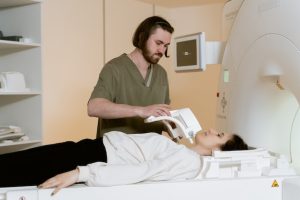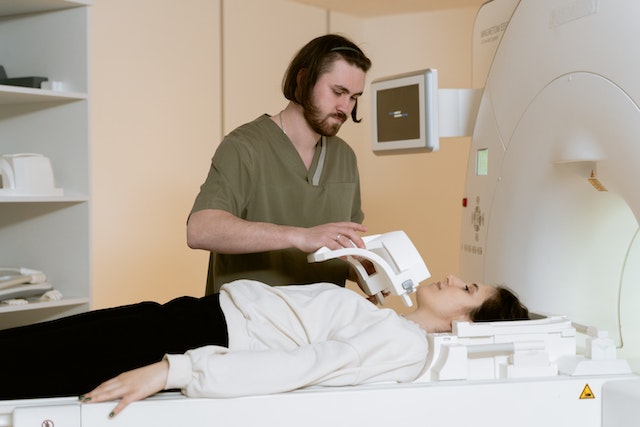Introduction: The Importance of Making the Physical Examination Process Smoother in Primary Care Streamlining the physical examination process is crucial in primary care settings to ensure efficient patient care delivery. If healthcare professionals optimize workflow and use effective strategies, they can make the examination process quicker, save time, and provide comprehensive care. Let’s explore some
Introduction: The Importance of Making the Physical Examination Process Smoother in Primary Care
Streamlining the physical examination process is crucial in primary care settings to ensure efficient patient care delivery. If healthcare professionals optimize workflow and use effective strategies, they can make the examination process quicker, save time, and provide comprehensive care. Let’s explore some helpful tips to simplify the physical examination process in primary care. We’ll discover how to prepare beforehand, plan our steps efficiently, use technology wisely, and provide comprehensive care.
Pre-Visit Preparation: Setting the Stage for a Smooth Examination
Getting ready beforehand is really key because it helps make sure that the physical exam goes smoothly. Key steps include:
Patient Education: Make sure patients understand what to expect during the physical examination. Provide clear guidance on necessary preparations and any specific clothing they should wear. This makes patients feel ready and reduces possible delays or confusion during the examination.
Documentation Review: Thoroughly go through all of the patient’s medical records to understand their medical history, past test results, and ongoing treatments. Knowing about the patient’s health before the examination helps make better assessments and asks fewer unnecessary questions.
Equipment Readiness: To be prepared for examinations, gather all your examination tools such as stethoscopes, otoscopes, and blood pressure cuffs. Make sure they are in proper working condition too. Examinations no longer require lengthy searches or equipment adjustments, so it frees up time.
Efficient Workflow Strategies: Maximizing Efficiency during Physical Examinations
The physical examination process can become much smoother by using efficient workflow strategies. Consider the following tips:
Room Organization: Keep the examination rooms in order and stocked with all the things you usually use. Design the room layout to ensure smooth transitions between examination steps.
Standardized Processes: Develop standardized protocols for conducting physical examinations, including a checklist of essential components. Doing this makes everything consistent, stops mistakes, and guarantees that all the necessary evaluations get finished fast.
Delegation and Teamwork: Delegate appropriate tasks to trained support staff, such as taking vital signs or preparing examination instruments. Efficient collaboration among healthcare team members allows for smoother workflow and more focused patient interactions.
Utilizing Technology: Making the Physical Examination Process Better in Primary Care
Using technology can make the physical examination process in primary care settings even more efficient. Consider the following:
Electronic Health Records (EHR): Employ EHR systems to access patient records, document exam results, and smoothly exchange data. Healthcare providers can now exchange information more easily, which helps them in their work.
Point-of-Care Testing: Incorporate portable lab equipment or handheld diagnostic tools to obtain instant results for certain tests. This means less appointments to book and helps the doctor figure out what’s wrong sooner.
Telehealth and Telemedicine: Embrace telehealth technologies for virtual consultations or follow-ups when appropriate. This allows for remote assessment of certain conditions, minimizing unnecessary in-person visits and optimizing patient scheduling.

Photo by MART PRODUCTION: https://www.pexels.com/photo/photo-of-medical-worker-doing-a-test-on-patient-7089397/
Comprehensive Care: Keeping patients satisfied with streamlined examinations
Streamlining the physical examination process is necessary, but giving patients comprehensive care is just as crucial. Consider the following:
Active Listening: Devote some time during the examination for actively listening attentively and addressing any questions that patients might have. This practice encourages patients to be actively involved, establishes trust, and ensures that every relevant part of their health is looked at.
Patient Education: Provide patients with clear explanations of examination findings, diagnoses, and treatment plans. Empower them with the necessary knowledge to actively participate in their healthcare decisions and self-management.
Follow-up Communication: Set up efficient systems to talk after exams, like using secure messages or virtual follow-up meetings. This permits constant help, clear explanations, and monitoring of patient development.
Conclusion
Streamlining the physical examination process in primary care settings is crucial for efficient patient care delivery. Preparing before visits, using efficient methods for tasks, utilizing technology effectively, and providing complete care are all things that healthcare professionals should do to optimize the examination process. Embracing these top tips allows for smoother workflows, improved patient experiences, and enhanced healthcare outcomes. By constantly improving how they do physical examinations, primary care providers can give top-notch care that focuses on patients while using their time and resources well.

















Leave a Comment
Your email address will not be published. Required fields are marked with *